A student guide to success at Penn State. LuLu.com
 Glantz, E. J., & Ritter, F. E. (2025). A student guide to success at Penn State. LuLu.com [Front matter] [Chapter 1] [Flyer]
Glantz, E. J., & Ritter, F. E. (2025). A student guide to success at Penn State. LuLu.com [Front matter] [Chapter 1] [Flyer]
[Site to order a copy]
Skills to Obstruct Pandemics: How to protect yourself and your community from COVID-19 and related infections
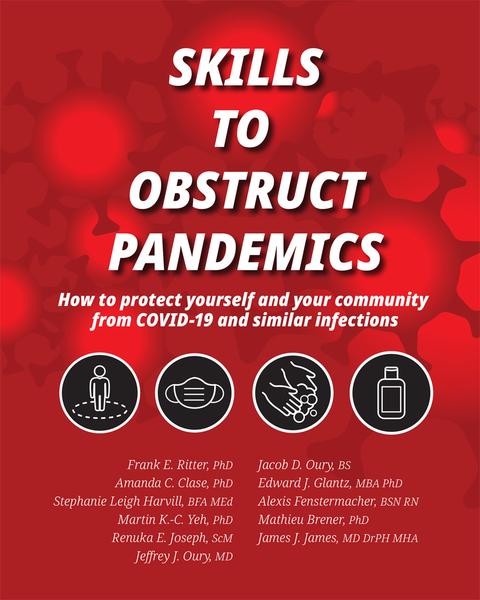 Skills to Obstruct Pandemics: How to protect yourself and your community from COVID-19 and related infections. Ritter, F. E., Clase, A. C., Harvill, S. L., Yeh, M. K.-C., Joseph, R. E., Oury, J. J., Oury, J. D., Fenstermacher, A., Brener, M., & James, J. J. (2020). [Front matter and Introduction] [Flyer] [Tutor the book is based on]
Skills to Obstruct Pandemics: How to protect yourself and your community from COVID-19 and related infections. Ritter, F. E., Clase, A. C., Harvill, S. L., Yeh, M. K.-C., Joseph, R. E., Oury, J. J., Oury, J. D., Fenstermacher, A., Brener, M., & James, J. J. (2020). [Front matter and Introduction] [Flyer] [Tutor the book is based on]
Building Better Interfaces for Remote Autonomous Systems:
An Introduction for Systems Engineers
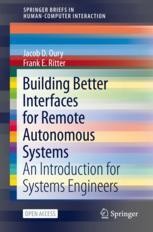
 Building Better Interfaces for Remote Autonomous Systems
An Introduction for Systems Engineers. Oury, J. D., & Ritter, F. E. (2021). [Flyer]
Building Better Interfaces for Remote Autonomous Systems
An Introduction for Systems Engineers. Oury, J. D., & Ritter, F. E. (2021). [Flyer]
[Open access, online copy]
Proceedings of ICCM 2016, 14th International Conference on Cognitive Modeling (ICCM 2016)
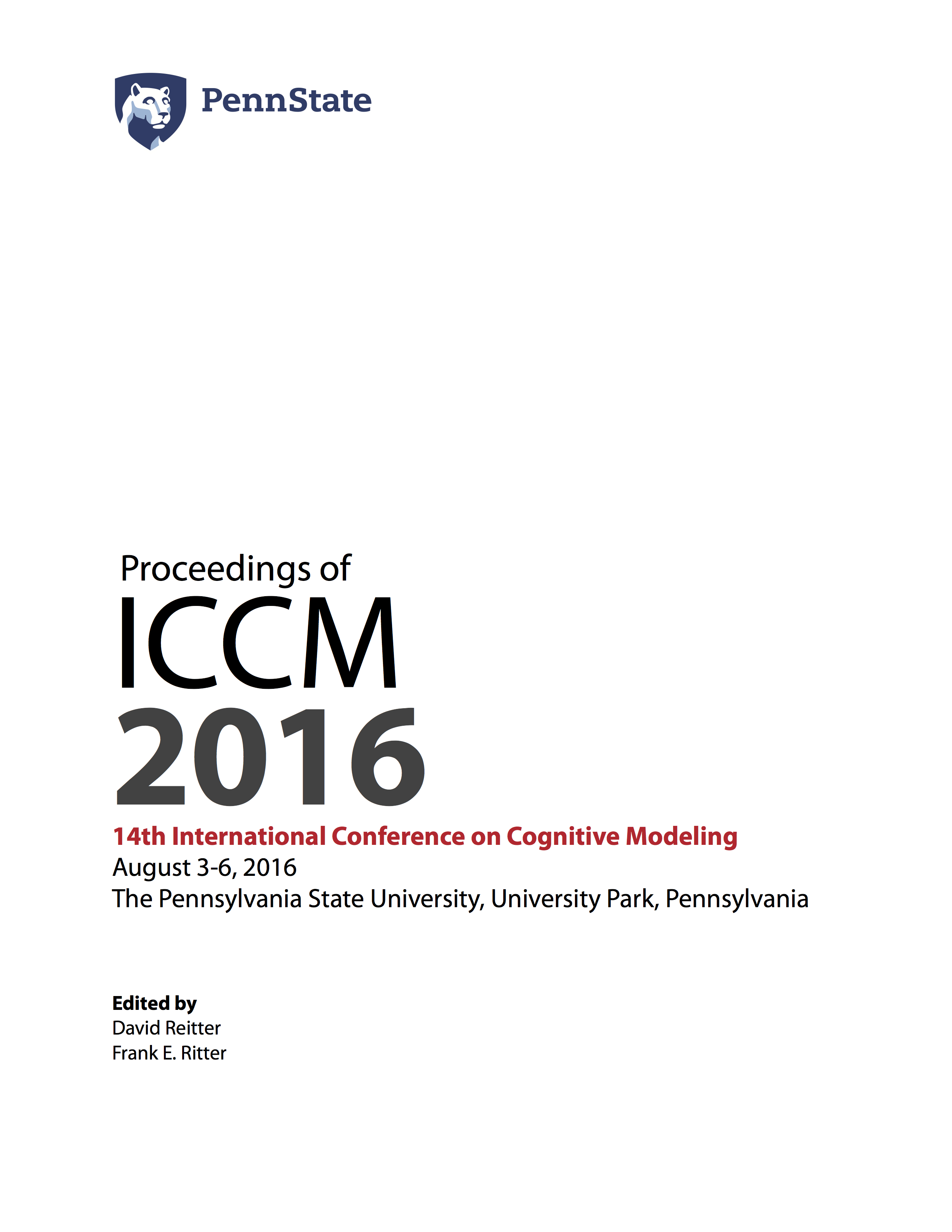 Proceedings of ICCM 2016, 14th International Conference on Cognitive Modeling (ICCM 2016). Reitter, D., & Ritter, F. E. (Eds.). (2017). Introduction. Available as single pdf or by paper.
Proceedings of ICCM 2016, 14th International Conference on Cognitive Modeling (ICCM 2016). Reitter, D., & Ritter, F. E. (Eds.). (2017). Introduction. Available as single pdf or by paper.
Foundations for User-Centered Design
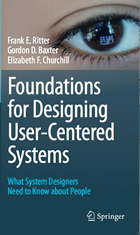 Foundations for user-centered Design: What system designers need to know about people, Ritter, Baxter, & Churchill (2014), Springer. We also have a small web site of supplemental materials [Web site with slides, extra references, etc.] It has been used at several universities in the US, the UK, mainland Europe, and China.
Foundations for user-centered Design: What system designers need to know about people, Ritter, Baxter, & Churchill (2014), Springer. We also have a small web site of supplemental materials [Web site with slides, extra references, etc.] It has been used at several universities in the US, the UK, mainland Europe, and China.
Foundations for User-Centered Design (Chinese version)
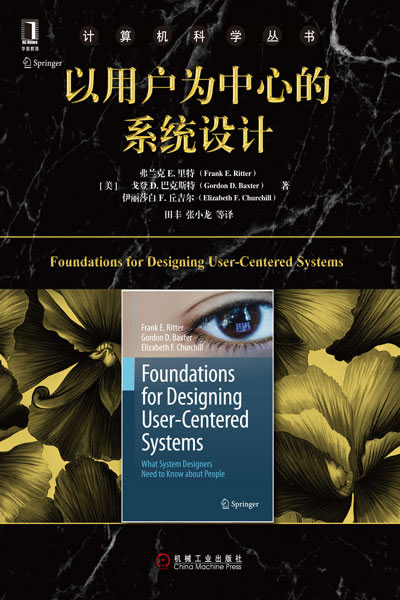 Foundations for user-centered Design: What system designers need to know about people, Ritter, Baxter, & Churchill (2014), translated by researchers as the Chinese Academy of Science (2017), led by Prof. Xiaolong Zhang. Published by China Machine Press.
Foundations for user-centered Design: What system designers need to know about people, Ritter, Baxter, & Churchill (2014), translated by researchers as the Chinese Academy of Science (2017), led by Prof. Xiaolong Zhang. Published by China Machine Press.
Running behavioral studies with human participants
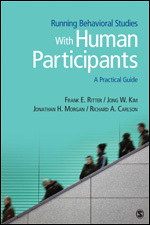 Running behavioral studies with human participants: A practical guide, Ritter, Kim, Morgan, & Carlson (2013), Sage. We also have a small web site of supplemental materials [Web site with slides, extra references, etc.] It has been used at 8 universities in the US, Canada, and the UK. There is also a tech report version available.
Running behavioral studies with human participants: A practical guide, Ritter, Kim, Morgan, & Carlson (2013), Sage. We also have a small web site of supplemental materials [Web site with slides, extra references, etc.] It has been used at 8 universities in the US, Canada, and the UK. There is also a tech report version available.
In order to learn: How the sequence of topics influence learning
 Ritter, F. E., Nerb, J., O'Shea, T., & Lehtinen, E. (Eds.), (2007). New York, NY: Oxford University Press. This book describes order effects (e.g., ab vs. ba) in human and machine learners. It arose out of a European Science Foundation project to study learning in humans with applications to education and technology.
Ritter, F. E., Nerb, J., O'Shea, T., & Lehtinen, E. (Eds.), (2007). New York, NY: Oxford University Press. This book describes order effects (e.g., ab vs. ba) in human and machine learners. It arose out of a European Science Foundation project to study learning in humans with applications to education and technology.
Human-system integration in the system development process: A new look.
 Ritter, F. E. [member], Committee on Human-System Design Support for Changing Technology. (2007). Human-system integration in the system development process: A new look. Richard W. Pew and Anne S. Mavor (eds.). National Research Council, National Academy Press. Washington, DC. This book describes a risk-driven approach to large system design. This provides a role for human-factors and HCI issues, and it proposes several research projects in these areas, some related to the central role that models of users should provide in this process.
Ritter, F. E. [member], Committee on Human-System Design Support for Changing Technology. (2007). Human-system integration in the system development process: A new look. Richard W. Pew and Anne S. Mavor (eds.). National Research Council, National Academy Press. Washington, DC. This book describes a risk-driven approach to large system design. This provides a role for human-factors and HCI issues, and it proposes several research projects in these areas, some related to the central role that models of users should provide in this process.
Techniques for modeling human performance in synthetic environments: A supplementary review
 Ritter, F. E., Shadbolt, N. R., Elliman, D., Young, R., Gobet, F., & Baxter, G. D. (2003). Wright- Patterson Air Force Base, OH: Human Systems Information Analysis Center. This book is a reply to Pew & Mavor funded by the UK government, and it includes about 30 projects in this area, many of which we have been working on. Some have appeared as program announcements in the UK (intentional), and in the US (we don't know the casuality).
Ritter, F. E., Shadbolt, N. R., Elliman, D., Young, R., Gobet, F., & Baxter, G. D. (2003). Wright- Patterson Air Force Base, OH: Human Systems Information Analysis Center. This book is a reply to Pew & Mavor funded by the UK government, and it includes about 30 projects in this area, many of which we have been working on. Some have appeared as program announcements in the UK (intentional), and in the US (we don't know the casuality).
Proceedings of the Second European Conference on Cognitive Modelling
 Ritter, F. E., & Young, R. M. (Eds.). (1998). Thrumpton (UK): Nottingham University Press. Now out of print, but available online.
Ritter, F. E., & Young, R. M. (Eds.). (1998). Thrumpton (UK): Nottingham University Press. Now out of print, but available online.
Herbal, a high level behavior representation language
Herbal is designed to provide a higher level language than Soar or ACT-R. We have documented 3-10x speedup, and for undergraduates at Lock Haven University to program Soar as quickly as graduate students at CMU. We have used it and are using it to create more complex models more quickly. It draws on software engineering, compilers, and HCI to do this.
Some software
Some models
Some other resources
